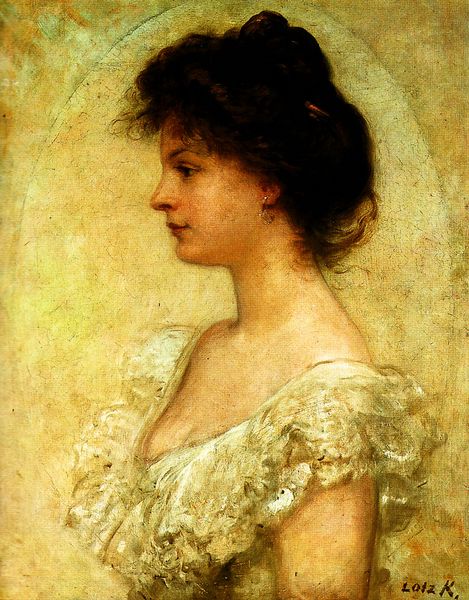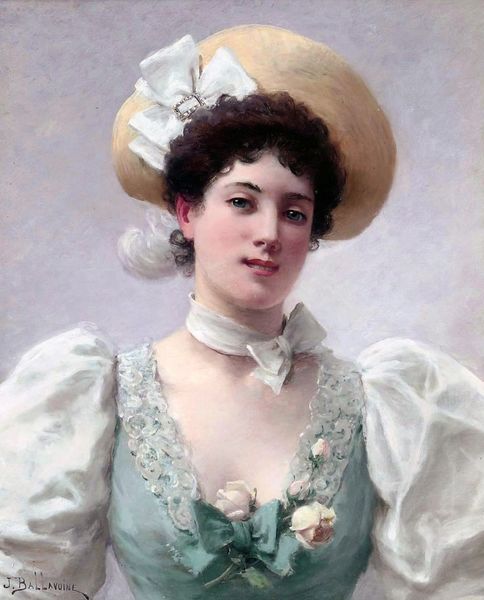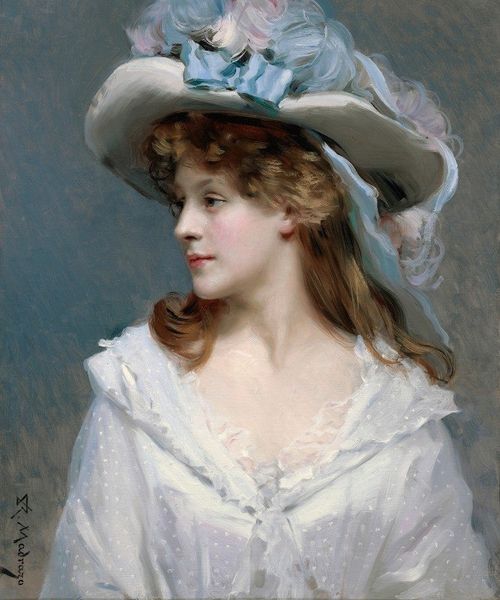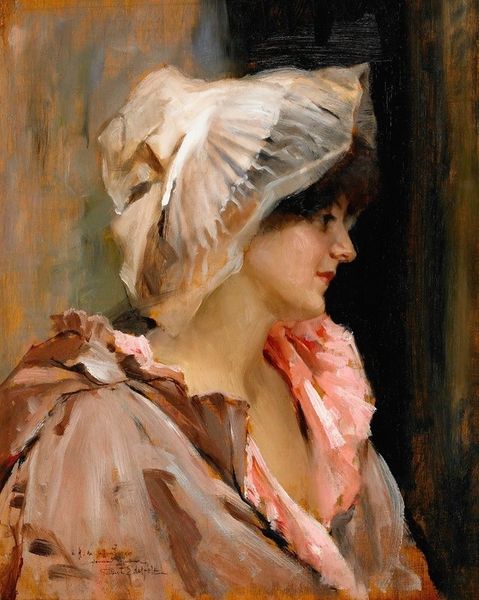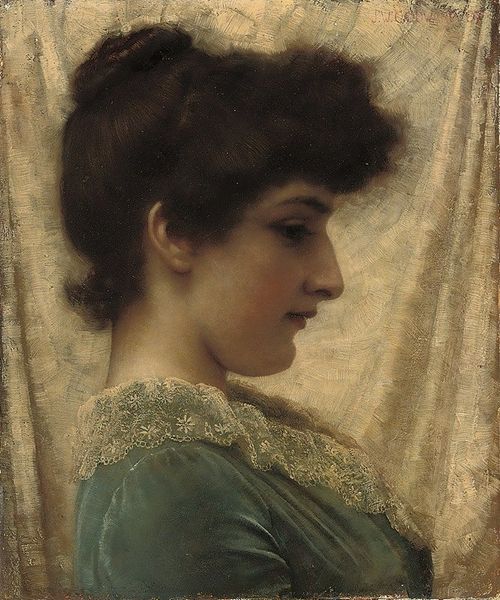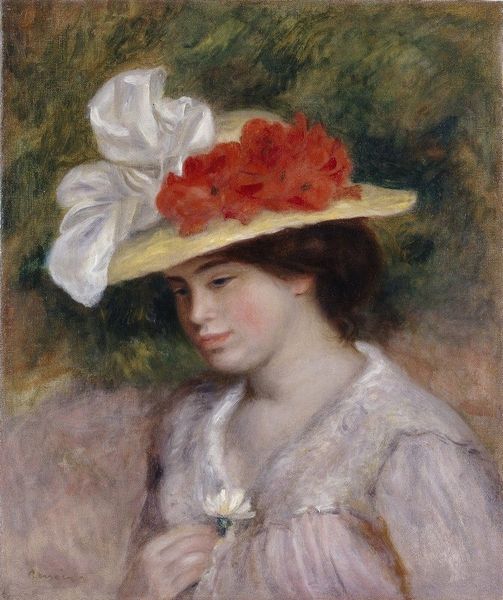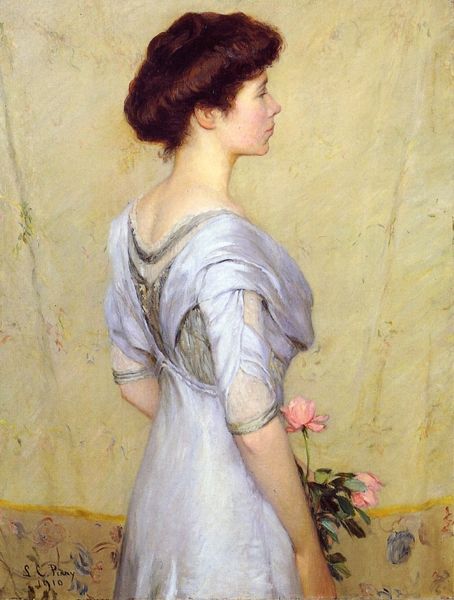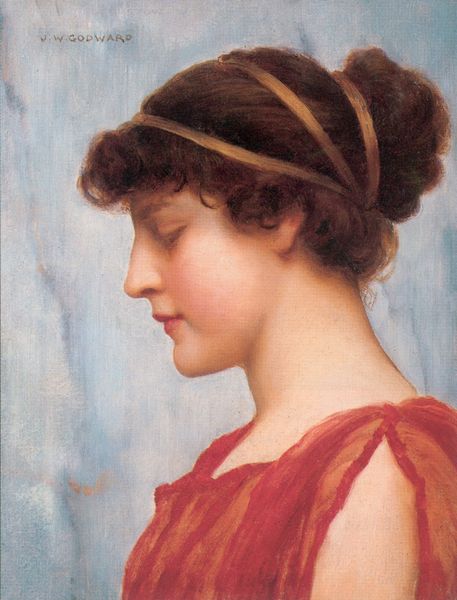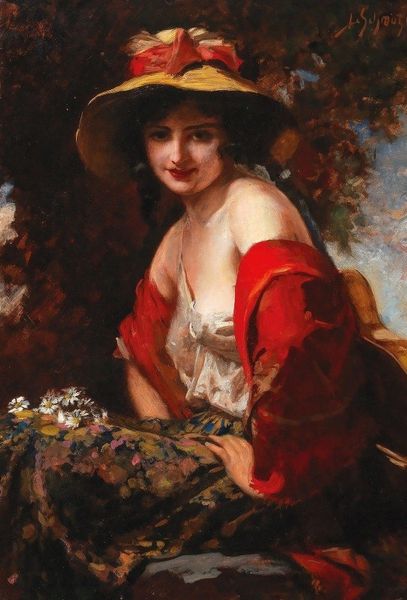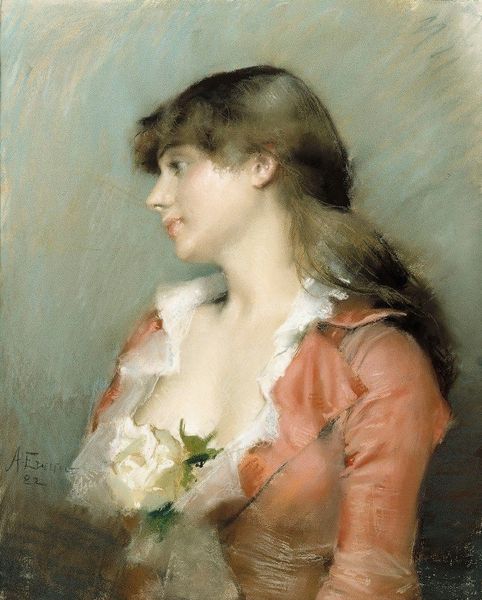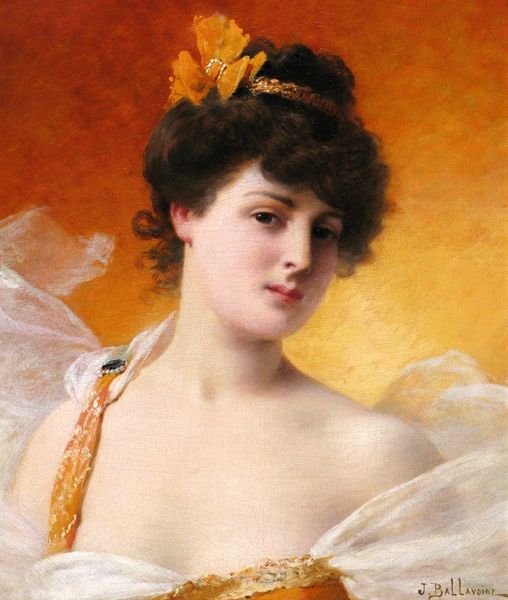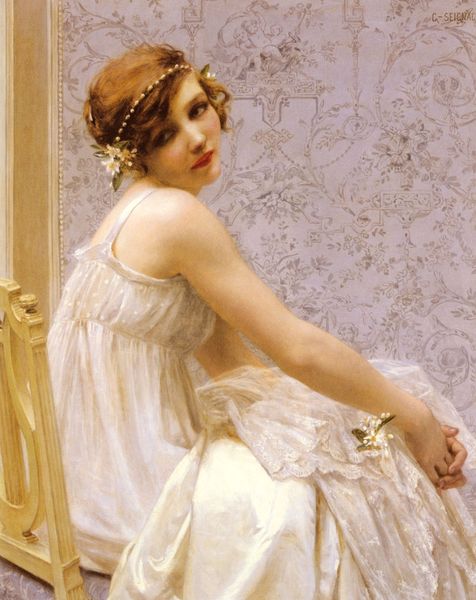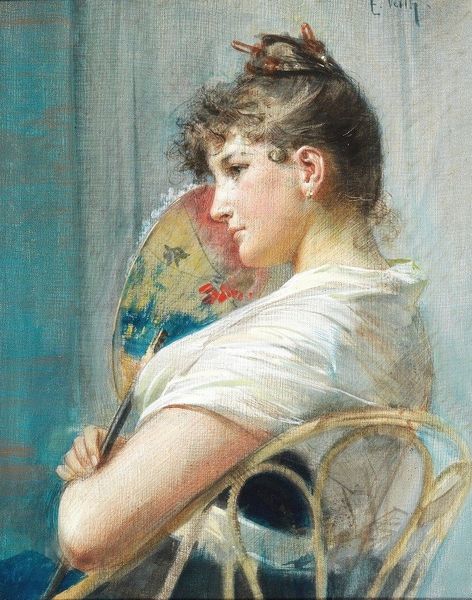
Copyright: Public domain
Curator: Let's take a look at "Portrait of a Woman" by Achille Beltrame, created in 1917. It's a lovely example of his portraiture, utilizing pastel and charcoal. Editor: Oh, it has such a gentle air about it. It feels very soft, like looking at a memory, almost ethereal. Curator: Yes, that gentleness resonates through his deft handling of materials. I wonder, looking at it now, what was she thinking? Was this portrait meant for a lover, a family member...a dream? Her averted gaze seems to invite introspection. Editor: Right, that's the beauty of pastels and charcoal. See how Beltrame used them? Those layers aren’t just pigment. It's all carefully considered construction. Curator: Agreed. You know, I always feel a pang of sadness when I view portraits from this period. All those lives touched by the first World War. I see in her a subtle weariness... but also, a glimmer of hope. Do you see that? Editor: Absolutely. She is wearing clothes with what appear to be loose layers with what looks like a draped belt around her. I see the same sensibility in those sweeping marks—it seems this kind of technique helped mask a much bigger crisis going on at that time. You get more production with a lesser expenditure of precious pigments. The portrait is still really successful and elegant—with more elegance and less production it makes it accessible. Curator: She looks to the future. Beltrame captures something very powerful in her gaze, and it almost whispers to me "endurance," and the work still inspires those notions. It's remarkable what an artist can convey with what you would describe as economy, right? Editor: Exactly. These techniques aren’t just accidents; they’re shaped by necessity. This allows her likeness to spread, to connect her face to new gazes over generations. In short, she has lived many lives. Curator: What an interesting perspective! Thinking about materials really reveals another story behind the image we see at first glance. Editor: And those untold stories change everything. The more hands that contribute to a piece—seen or unseen—the richer its meaning, you know?
Comments
No comments
Be the first to comment and join the conversation on the ultimate creative platform.
